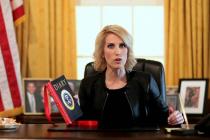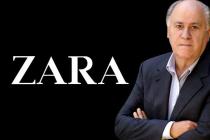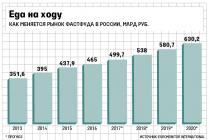F.I. Sharkov
Fundamentals of Communication Theory
The main version is approved by the Ministry of Education of the Russian Federation as a textbook for students of higher educational institutions studying in the specialty 350400
"Public relations"
Sharkov Felix Izosimovich - Doctor of Sociology, Professor, Director of the Institute of Sociology, Advertising and Journalism of the International Academy of Business and Management, member of the Presidium of the Educational and Methodological Association of Universities of the Russian Federation for education in the field of international relations.
Felix Izosimovich is a full member (academician) and corresponding member of the academies: RANS, the Academy of Pedagogical Sciences, a member of the presidium of the Department, the International Academy of Informatization, the International Academy of Information, Information Technologies and Processes.
F.I. Sharkov is the founder of a new scientific direction (socionomics), the author of the theories of the noosocietal system, marketing and virtual communication, and others, the author of more than 20 books (monographs, textbooks and manuals) and 140 scientific papers.
CONTENT
INTRODUCTION THEORY OF COMMUNICATION IN THE SYSTEM OF SCIENCES ..............................................
CHAPTER 1. HISTORICAL MILESTONES OF ORIGIN AND DEVELOPMENT
1.1. Genesis of mass communications ..................................................................................................
1.2. Origins and main paradigms of social communication
1.3. Development of theories of mass communication and information in the XX century..................................................

Taken from the site “Information, management, business” (www.iub.at.ua)
CHAPTER 2. VARIETY OF COMMUNICATIONS. INTERPERSONAL,
SPECIALIZED AND MASS COMMUNICATIONS..................................................................
Main questions of the chapter ..............................................................................................................
Keywords.......................................................................................................................
2.1. Types, types, forms and models of communication..................................................................................
FORMS OF COMMUNICATION...............................................................................................................
Communication models ..................................................................................................................
2.2. Features of the emergence and development of interpersonal specialized and
mass communication. Functions of Mass Communication ..................................................................
2.2.1. Interpersonal communications ..................................................................................................
2.2.2. Specialized communications. Communications in organizations ..............................
2.2.3. The essence of mass communication ..............................................................................................
2.2.4. Functions and characteristics of mass communication ...............................................................
2.2.5. Network and structure of social communication ..............................................................................
Questions for self-control ...............................................................................................................
Main literature..............................................................................................................
Additional literature...................................................................................................
CHAPTER 3. COMMUNICATION PROCESSES ..............................................................................
Main questions of the chapter ..............................................................................................................
Keywords.......................................................................................................................
3.1. Communication process: production, animation, distribution,
reception, recognition, use of information ..............................................................................
3.2. Passage of information through the elements of the communication system ..............................................
3.3. Ensuring the communication process. Communication as a communicative process ..........
Choice of communication channels ..................................................................................................
Exchange of information through formalized channels ..........................................................................
Exchange of information through non-formalized channels .......................................................
Argumentation as a communicative procedure ..............................................................................
Questions for self-control ...............................................................................................................
Literature (basic)..................................................................................................................
Literature (additional) ..................................................................................................
CHAPTER 4. COMMUNICATORS AND COMMUNICANTS AS SUBJECTS
COMMUNICATIONS........................................................................................................................
4.1 Targets of the communicator. communication roles. Communication area ..........................
4.2 Communicative personality. Requirements for the qualities of a communicator. Personality in
social communication system ..............................................................................................................
Personality in the communication system ..............................................................................................
Questions for self-control ...............................................................................................................
Main literature..............................................................................................................
Additional literature...................................................................................................
5.2. Semiotics of language: syntactics, semantics, pragmatics ..............................................................
CHAPTER 6. COMMUNICATION AUDIENCE ..............................................................................................
6.1. Feedback in the system of interaction between the communicator and the mass audience.......
Mass communication in the field of public relations and relations.......................................
6.2. Barriers to communication and distortion of information ..............................................................
Questions for self-control ...............................................................................................................
Taken from the site “Information, management, business” (www.iub.at.ua)
Main literature..............................................................................................................
Additional literature...................................................................................................
CHAPTER 7. PROVISION OF INFORMATION EXCHANGE IN
COMMUNICATION SYSTEMS ...............................................................................................
7.1. Information as the main element of communication systems. Production and
consumption of information ..................................................................................................................
7.2. The role of informatization in management activities and functioning
communication systems ..................................................................................................................................
7.3. Ensuring information security and communication systems ..............................................
7.4. Mass media as the main communication network ..............................................
Monitoring the impact of the media on the mass audience....................................................................
THEORY OF COMMUNICATION...............................................................................................................
TESTS....................................................................................................................................................................
Test 1....................................................................................................................................................................
Test 2....................................................................................................................................................................
Glossary.................................................................................................
FOUNDATIONS OF THE THEORY OF COMMUNICATION..................................................................................................
PROGRAM..................................................................................................................................
Distribution of course hours by topics and types of work..................................................................................
PURPOSE AND OBJECTIVES OF THE COURSE ...............................................................................................................
Topic 1. Subject and basic aspects of the theory of communication ..............................................................
Topic 2. Historical milestones in the emergence and development of communication ..............................................
Topic 3. Development of information and communication theories ..............................................................
Topic 4. Types, types, functions, means of communication ..............................................................
Topic 5. Interpersonal specialized and mass communications. Models and
structural components of communication ..................................................................................................
Topic 6. Communication process. Sociological dominants of communication...............
Topic 7. Communicative personality. Communicator and communicants ..............................................
Topic 9. Audience and communications ...............................................................................................
Topic 10. Ensuring information exchange in communication systems ....................
Topic 11. Effectiveness of communication...............................................................................................
Topic 12. Communication in various spheres of public life ..............................................
Topic 13. Methods of communication research...............................................................................
PLANS OF SEMINAR LESSONS ..............................................................................................
The plan of the seminar on the topic "Historical milestones in the emergence and development of communication" ...
The plan of the seminar on the topic "Development of theories of information and communication"..................................................
Literature...............................................................................................................................
The plan of the seminar on the topic "Types, types, functions, means of communication" ..............................
Literature...............................................................................................................................
The plan of the seminar on the topic "Interpersonal specialized and mass
communications. Models and structural components of communication".................................................................
Literature...............................................................................................................................

Taken from the site “Information, management, business” (www.iub.at.ua)
The plan of the seminar on the topic “Communication process. Sociological dominants
Literature...............................................................................................................................
The plan of the seminar on the topic "Communicative Personality" ..............................................................
Communicator and communicators ..................................................................................................................
Literature...............................................................................................................................
The plan of the seminar on the topic “Content of communication. Semiotics of language"..................................................
Literature...............................................................................................................................
The plan of the seminar on the topic "Audience and communications"..................................................................................
Literature...............................................................................................................................
The plan of the seminar on the topic "Ensuring information exchange in communicative
systems"
Literature...............................................................................................................................
Plan of the seminar on the topic "Communication Efficiency"..................................................................................
Literature...............................................................................................................................
The plan of the seminar on the topic "Communication in various spheres of public life"..........
Literature...............................................................................................................................
The plan of the seminar on the topic “Research methods ..................................................................................
communications"..............................................................................................................................
Literature...............................................................................................................................
EDUCATIONAL AND METHODOLOGICAL SUPPORT OF THE COURSE ..............................................................
Fundamentals of Communication Theory
This textbook is addressed to students, graduate students and teachers of higher educational institutions, as well as researchers and professionals associated with the theory and practice of communication, and to a greater extent - social communication. At the end of each chapter, questions for self-control are given, a list of basic and additional literature on this topic is given.
INTRODUCTION THEORY OF COMMUNICATION IN THE SYSTEM OF SCIENCES
Communication in a broad sense is also understood as a system in which interaction is carried out; and process of interaction; and methods of communication that allow you to create, transmit and receive a variety of information. In 1969, J. D'Arcy for the first time in
France draws public attention to the need to recognize human rights to communication, including in this concept the possibility of providing both material and spiritual conditions of communication1. Communication (lat. communicatio from communicare - to make common, to connect; way of communication, form of communication) is the object of study of many sciences: semiotics, sociology, ethnography, psychology, rhetoric, as well as cybernetics, information science and a number of other natural science disciplines. Today this concept is used in two meanings:
1. 1. way of communication, connection of one place with another (for example, transport communications, underground communications);
2. 2. communication, transfer of information from a person (group) to a person (group); a specific form of their interaction in the process of life with the help of language and other signal forms of communication.
1 See: V.P. Terin. Mass communication. M., 2000. - S. 197.
Taken from the site “Information, management, business” (www.iub.at.ua)
According to our subject of study, the book further discusses aspects of communication in relation to the second definition. Each science or scientific direction that studies certain aspects of communication or comes into contact with communication problems singles out its subject of study from communication. The theory of communication developed as an interdisciplinary direction. “Its emergence was associated with the need for reflection on their own activities by representatives of the mass media in the conditions of the “information explosion”, which led to the predominance of journalists and linguists in this area of knowledge, as well as the choice of the general scientific principles of the information approach as a theoretical basis”2.
Semiotics explores the properties of signs and sign systems in society (natural and artificial languages, some cultural phenomena related to signs), the person himself (visual and auditory perception, etc.), nature (communications in the animal world)
Sociology studies the functional features of communication of various social groups, representing their interaction - the transfer and receipt of semantic and evaluative information in order to influence their interaction, as well as the attitude towards social values of certain communities and society as a whole. Communication is determined by economic professional social and other interests as a process of interaction between subjects. Sociology also studies the interaction of social and communicative factors in intra-group interpersonal and mass communication, as well as levels of communication, types of communication systems, their units, categories and particular functions of social communication. For a sociologist, it is important to study communication as a socially conditioned process, within which individual and group attitudes of speech behavior are formed. On the basis of mutual understanding in the process of interaction, a set of actions and activities is formed that ensure the achievement of communication purposes. In the sociology of communication, along with interpersonal communication, mass communication is comprehensively studied, the social factors that determine the influence of mass communication on the formation of public opinion are studied.
Ethnography studies everyday and cultural features of communication as communication in ethnic communities.
“Sociolinguistics explores the problems associated with the social nature of the language and the peculiarities of its functioning in various societies, as well as the mechanism of interaction of social and linguistic factors that determine contacts between representatives of various social groups”3.
Psychology and psycholinguistics consider the factors that contribute to the transmission and perception of information, the factors that contribute to interpersonal and mass communication and the reasons that impede this process, as well as the motivation for the speech behavior of communicants. Linguistics studies the problems of verbal communication (words and phrases in oral and written speech), various functions of language as a means of communication. Here, the study of the perception of information by its recipient is relegated to the background, since it refers to the so-called extralinguistic factors of communication. Paralinguistics, on the other hand, specializes in methods of non-verbal communication (gestures, facial expressions and other non-verbal means of communication).
Cybernetics includes quite independent sections - information theory, theory of algorithms, automata theory, operations research, optimal control theory, pattern recognition theory. It develops general principles for the creation of control systems and systems for the automation of mental work.
Separate branches of knowledge are engaged in the formation of special codes and systems of special symbols and rules, with the help of which information exchange is carried out.
2 Vasilkova V. V., Demidova IM. E. Sociology of communications - disciplinary status and methodological outlines. // Sociology and society. Abstracts of the First All-Russian Sociological Congress "Society and Sociology: New Realities and New Ideas" - St. Petersburg: Publishing House "Skifia", 2000 - P. 348.
3 V. P. Konetskaya. Sociology of communication. M., 1997. - S. 5-6.

Taken from the site “Information, management, business” (www.iub.at.ua)
A number of technical disciplines study the possibilities and ways of transmitting, processing and storing information using technical systems.
In applied research, tasks related to communication are of particular importance - the development of human-computer dialogue systems, the improvement of statistical methods for processing and analyzing information data, the creation of artificial intelligence, and the implementation of machine translation. These tasks are varied.
From the creation of training programs for mastering communication skills in a foreign language to methods for overcoming speech disorders as a medical problem.
CHAPTER 1. HISTORICAL MILESTONES IN THE ORIGIN AND DEVELOPMENT OF COMMUNICATION
Goals. After studying Chapter 1, the student should: a) know:
theories of mass communication and information developed by foreign and domestic scientists;
definition of communication as a two-way process in intrapersonal, interpersonal and social contexts;
the specifics of the press, radio and television as mass media.
MAIN QUESTIONS OF THE CHAPTER
The origin and subsequent development of communication theories The origins of social communication Theories and methods of social communication
Mass communication as a social phenomenon Approaches to understanding the essence of mass information Development of modern communication theories
KEYWORDS

Taken from the site “Information, management, business” (www.iub.at.ua)
1.1. THE GENESIS OF MASS COMMUNICATIONS
At the earliest stage of the development of society, man used various means of communication and communication. Man, as a social being, constantly sought to interact with other people. To intensify and expand the scope public communications it was necessary to overcome long distances and he was forced to look for means of transportation used to establish communications with people located at a certain distance. Perhaps the very first most actively and effectively
exploited means, contributing to a faster establishment mass communications was a horse. The rider, overcoming relatively large distances, established communications with a significantly larger number of people. The invention of the wheel and its use in the design of the cart has increased the number of actors seeking to establish external public communications . Striving for excellence means of communication led to the creation of all kinds of vehicles, aircraft, including space systems.
Here it was about the implementation of external public mass communications carried out by moving subjects of communication to the outer remote communication environment. One of the reasons that caused the desire to implement such communications is the desire to expand the scope of functioning and development of the system for the exchange of goods, information, and, subsequently, objects of material production.
IN In ancient Greece and Rome, public relations were an organic part of the social management system. Later in America, Benjamin Franklin, Alexander Hamilton, Thomas Jefferson, through active communications with their public, controlled public opinion. They actively spoke in the press, publicly spread their revolutionary ideas in front of an audience.
Subsequently for communication intensification it required the invention of means of communication that would allow the required communications to be carried out without public contact. Yes, through the system iconic signals(flags, bonfires - within
visibility; sound signals - within earshot) communications began to be carried out on
distance. To increase the distance within which you want to install targeted one-time communications such individual means of communication
like a messenger, messenger. In order to expand spheres of remote communications And
turning them into a mass mail service was invented, which provided enough
mass address communication between communicating elements public system. Due to the fact that in such a system phase of communicative exchange of informationlarge enough, the relevance of the information received often decreased, or even disappeared altogether, and even more so, the information received through feedback became outdated, which made this system
communication links quite amorphous, communication environment- not intensified.
The telegraph, invented in the 19th century, marked the beginning of a new era mass remote non-public communications. With the creation of the system telegraph communications increased a thousandfold communication speed, and most importantly, the number of participants in communicative relationships - communicants. With the invention of radio and its introduction into global communication network information transfer rate in communication exchange reached the speed of light, and most importantly - information and given means of communication have become massive. Almost universal telephony

Taken from the site “Information, management, business” (www.iub.at.ua)
urbanized regions, according to K. Steinbuch4, increases the throughput of information by 333 times, and it logically follows that, accordingly, it increases by the same amount communication intensity. Increasing the mobile properties (non-stationarity, wireless devices) of telephone sets at least another 5-6 times increases this possibility. Television, immediately becoming a mass phenomenon, made a new breakthrough in increasing the speed of information transfer. mass audience and 550 thousand times compared with the telegraph 5 . The volume of information transmitted from source of communication To . Feedback from the recipient to the source of information is carried out through a system of letters, telegrams, telephone calls, faxes received on television.
Television, immediately becoming a mass phenomenon, made a new breakthrough in increasing the speed of information transfer. mass audience And bandwidth of the communication channel 550 thousand times compared with the telegraph 6 . The volume of information transmitted from source of communication To recipients of the communication system. In addition, television began to return the natural oral with auditory-visual impact on people, characteristic of pre-literate culture. Feedback from the recipient to the source of information is carried out through a system of letters, telegrams, telephone calls, faxes received on television. Interactive TV
This stage in the development of mankind, according to the theory of G. McLuhan, marks the end of the Gutenberg era, although in all subsequent periods of human development, printing continues to play a huge role in the development of human culture.
Audiovisual communication (especially in its non-interactive stage) is fraught with many dangers, violations and obstacles that arise in any part of such a communication system sometimes lead to extreme consequences. An example would be
serve the situation described in the book "Management in Organizations"7. The tragedy experienced by the Americans at Pearl Harbor in 1941 due to a failure in the communication system could perhaps have been avoided, if not two breakdowns in the communication system. The first failure occurred when the message "Vetra" was intercepted, which announced the planned attack. However, the top military leadership did not pay attention to the intercepted information. The second failure occurred due to the inability to transmit to the military command in the Hawaiian Islands information about the approach of unknown aircraft detected by the radar installation to Pearl Harbor.
Until recently, computers were a personal means of processing and analyzing information. Today, with the inclusion in the global information network Internet, computers have become the most powerful tool for inclusion in mass communication system.
In 1909, Charles Cooley identifies communication as a means of actualizing human thought. In 1931, J. Herbert Mead noted that in interaction the individual assumes the role of another, and the experience accumulated by mankind becomes generally known and accessible. Mass communication was presented in the form of communication between the communicator and the audience, which give the communicative information the same meaning.
Interactive TV turned this information transmission channel into a full-fledged network two-way intensive communications. Violations and obstacles
4 Steinbukh K. Automaton and Man. M.: Sov. Radio, 1967 5 Ibid.
6 Ibid.
7 Herbert A. Simon, Donald W. Smithburg, Victor A. Thompson. Management in organizations. M.: RAGS, Economics, 1995. - S. 169.

Taken from the site “Information, management, business” (www.iub.at.ua)
arising in any link of such a communicative system can lead to tragic consequences. An example is the situation described in the book "Management in Organizations" 8 . The tragedy experienced by the Americans at Pearl Harbor in 1941 due to a failure in the communication system could perhaps have been avoided, if not two breakdowns in the communication system. The first failure occurred when the message "Vetra" was intercepted, which announced the planned attack. However, the top military leadership did not pay attention to the intercepted information. The second failure occurred due to the inability to transmit information to the military command in the Hawaiian Islands about the approach of unknown aircraft detected by the radar installation to Pearl Harbor.
Thus, the history of the development of communications has undergone three communication revolutions:
1) 1) the invention of writing;
2) 2) manufacture of a printing press;
3) 3) introduction of electronic mass media.
The introduction of the Internet opens a new era in the development of communication. The world "information web" today has neither physical, nor geographical, nor administrative-state, nor censorship boundaries. The information space is “overwhelmed” by the “fourth wave”, which simultaneously increases the intensity of communications and begins to limit interpersonal communications and transfer them to the virtual plane.
Nowadays, modern communications are developing not only in the USA, but also in other countries, sometimes even more intensively than in America. So, in March 2001, Sweden was recognized as the most informatized country in the world. Representatives of UNESCO, the World Bank and the International Telecommunication Union came to this conclusion, having studied the possibilities of accessing and accepting information in different countries. In second place is Norway, in third is Finland. The US dropped from second to fourth place. The big leap due to the rapid introduction of mobile communications was made by the UK, rising from twelfth to sixth place. At the same time, the Internet is best developed in Sweden, Singapore and Australia, and the USA takes the first place in the development of computer infrastructure.
1.2. ORIGINS AND MAIN PARADIGMS OF SOCIAL COMMUNICATION
The term "communication" (from Latin communicatio) appeared in the scientific literature at the beginning of the 20th century. One of the founders of American sociology, Charles Cooley, believed that “communication is understood as a mechanism by which the existence and development of human relations becomes possible - all symbols of the mind, together with the ways of their transmission in space and preservation in time. It includes facial expressions, communication, gestures, tone of voice, words, writing, printing, railways, telegraph, telephone, and the latest achievements in the conquest of space and time. There is no clear boundary between the means of communication and the rest of the outside world. However, along with the birth of the external world, a system of standard symbols appears, intended only for the transmission of thoughts, and the traditional development of communication begins with it.
Today, communication is communication, the transfer of information from person to person, from one system to another. Communication also means connection, message, news, interaction, exchange of information in society, creation and dissemination of information, as well as a means of communication. In addition, this term is used to denote the connection of any objects of the material and spiritual world. In zoopsychology and ethology, a whole
8 Herbert A. Simon, Donald W. Smithburg, Victor A. Thompson. Management in organizations. M.: RAGS, Economics, 1995. - S. 169.
9 Cooley Charles. Public organization // Texts on the history of sociology of the XIX-XX centuries. Reader. M.: Nauka, 1994. - S. 379.

10 Watson J. B. Behaviorism. N.Y., 1925.
11 Mead George. Mind, Self and Society. Chicago, 1936
The textbook is written in accordance with the requirements for the mandatory minimum content and the level of training of a specialist in the GPD cycle of the State Educational Standard in the specialty Advertising.
It reveals the role of the institution of public relations in modern society, provides the functions of public relations services and specialists, the technology of conducting PR campaigns, and other information.
For students, teachers of higher educational institutions, beginners and experienced PR-managers, as well as anyone interested in this issue.
Public relations in the communication system of marketing.
The concept and essence of integrated marketing communications
Consider domestic and foreign literature that reveals the essence of marketing communications. We note right away that the vast majority of Russian literature on this issue consists of works published before 1990, in which social communication is interpreted from purely class positions, its any forms are considered as a weapon in the ideological struggle. Already the names themselves published in the USSR in the 60-80s. monographs and collections (“Aggression of lies”, “Anatomy of lies”, “Beyond the heyday”, “Idols of the century”, “Media and capitalism”, “Socialist way of life and ideological struggle”, etc.) reveal a class approach to considering the essence of various types of communications.
CONTENT
FOREWORD
I. THE ROLE OF THE INSTITUTE OF PUBLIC RELATIONS IN MODERN SOCIETY
1.1. History of the development of science, profession and public relations industry
1.2. Subject, object, goals, objectives, essence, principles, functions of public relations
1.3. Interrelation of public relations with other sciences, scientific directions and disciplines. Advertising and public relations
1.4. Public Relations in Marketing Communication System
II. FUNCTIONS OF SERVICES AND PUBLIC RELATIONSHIPS
2.1. Public Relations Services
2.2. Integrative functions of a PR specialist, his status in the company
2.3. Requirements for public relations professionals
2.4. Public Relations Training
III. TECHNOLOGY FOR CARRYING OUT PR-CAMPAIGNS AND ACTIONS
3.1. Public Relations Campaigns: General
3.2. Internal communication as internal public relations
3.3. The Integrative Role of the Technology Cycle of a PR Campaign
3.4 Goals and directions of advertising and PR campaigns in the labor process
IV. FORMS OF PUBLIC RELATIONS EVENTS
4.1. Organizational forms in the activities of public relations specialists
4.2. Elements of an integrated technology for conducting an election campaign
4.3. Technologies used in “internal PR”
4.4. Technology and methodology of political consulting as a means of integrating the efforts of a specialist and a politician
4.5. Formation of the image (image) and prestige
V. LEVELS AND FORMS OF PUBLIC RELATIONS
5.1. Levels and forms of public relations events
5.2. Organizational forms in public relations
5.3. Communicative level of public relations leader
5.4. Ethics in public relations. Slang and "dirty" forms
5.5. Information and communication technologies in advertising and PR campaigns
5.6. Integrated goodwill formation technology
GLOSSARY.
Free download e-book in a convenient format, watch and read:
Download the book Public relations, Sharkov F.I., 2013 - fileskachat.com, fast and free download.
Download pdf
Below you can buy this book at the best discounted price with delivery throughout Russia.
From Wikipedia, the free encyclopedia
| This article is proposed for deletion. An explanation of the reasons and a corresponding discussion can be found on the page Wikipedia:To be deleted/October 6, 2015 . |
I save the article!(I promise to do until 09.10.2015)
| This article is likely to be autobiographical. This article is written in the non-encyclopedic style of an autobiography or resume, and therefore violates stylistic rules Wikipedia and may violate the rule about neutral point of view. It is possible that it is edited to a significant extent by the hero of the article or an organization associated with him, or other interested persons. There may be explanations on the talk page. |
| This article relies heavily or wholly on sources affiliated with the subject of the article or other interested party, which may raise doubts about neutrality And verifiability the information provided. Such sources also do not show significance the subject of the article. |
| Felix Izosimovich Sharkov | |
| Date of Birth: | |
|---|---|
| A country: |
USSR USSR → Russia, Russia |
| Scientific area: | |
| Academic degree: | |
| Alma mater: | |
| Known as: |
sociologist, specialist in the field of communication, integrated communications (advertising, public relations, exhibition communications) |
| Awards and prizes: | |
| Website: | |
Felix Izosimovich Sharkov(July 20, USSR, Chuvash Republic, village of Karabashi, Mariinsky-Posad district), - Soviet and Russian sociologist, founder of the interdisciplinary scientific direction "communicology". The author of the "information and communication paradigm" Sharkov's Fourth Wave ". The author of the encyclopedic dictionary-reference book "Communicology", the dictionary-reference book "Modern marketing communications. Dictionary-reference book", textbooks of the "Communicology", "Integrated Communications" series, etc. Full member of the Russian Academy of Natural Sciences in the section "Russian Encyclopedias" (since 09.12.2005). Honored Scientist of the Russian Federation Honored Worker of Higher Professional Education of the Russian Federation Author of more than 300 scientific papers, including about 50 monographs, textbooks and teaching aids... Included in the top 100 most productive Russian scientists according to the RSCI (6th place) and in the top 100 most cited Russian scientists according to the RSCI (6th place) in the nomination "Mass communication. Journalism. Mass media".
Biography
Currently - Vice-Rector for Science of the Academy of Labor and Social Relations, Head of the Department of Public Relations and Media Policy of the RANEPA, Professor at the RANEPA and ATiSO. Executive director of all-Russian competitions for the best final qualifying work in advertising and public relations and for the best video in social advertising. Member of the working group of the Coordinating Council of the Civic Chamber of the Russian Federation for combating terrorism.
Author-compiler and teacher of communication courses: sociology of communication, communication consulting, mass communications and media planning, gender communications, basics of communication theory, integrated marketing communications, communicationology, legal foundations of communication activities, gender communicationology, human resource management, human capital. and etc .
Scientific activity, membership in scientific communities
Economic theory, analysis, practice (ETAP). Member of the editorial board
Bulletin of the Russian University of Cooperation. Member of the editorial board
International scientific journal "PolitBook". Member of the editorial board
#AYURMoscow - online magazine. Member of the editorial board
Islam in the modern world. Member of the editorial board
Scientific and Advisory Council of the Center for Public Relations of the Government of Moscow. Expert.
Russian Expert Council for the selection and promotion of Russian journals in international information systems. Russian Content Advisory Board (RCAB). Expert group leader.
Expert Content Selection and Advisory Committee (ECSAC) - Russian Federation Scopus. Expert.
Association "International Academy of Communicology". The president.
Membership in program committees of scientific conferences
He is a member of the program committees of the international scientific conference "Science and Modern University" (University of Nis, Serbia) and the international scientific and practical conference of Business Research "Synthesis 2015" (Singidunum University, Belgrade).
Awards and prizes
- Medal "For Valiant Labor"
- Medal "For contribution to the development of local self-government"
- Medal "For contribution to the implementation of intercity cooperation"
- Medal "M.V. Lomonosov. 200 years"
- Medal "For the development of education and science"
- other industry awards
Write a review on the article "Sharkov, Felix Izosimovich"
Notes
Links
Official site of F. I. Sharkov
An excerpt characterizing Sharkov, Felix Izosimovich
The non-commissioned officer, frowning and muttering some kind of curse, advanced with his horse's chest on Balashev, took up his saber and rudely shouted at the Russian general, asking him: is he deaf that he does not hear what they say to him. Balashev named himself. The non-commissioned officer sent a soldier to the officer.Paying no attention to Balashev, the non-commissioned officer began to talk with his comrades about his regimental affairs and did not look at the Russian general.
It was extraordinarily strange for Balashev, after being close to the highest power and might, after a conversation three hours ago with the sovereign and generally accustomed to honors in his service, to see here, on Russian soil, this hostile and, most importantly, disrespectful attitude of brute force towards himself.
The sun was just beginning to rise from behind the clouds; the air was fresh and dewy. On the way, the herd was driven out of the village. In the fields, one by one, like bubbles in water, the larks burst up with a chuckle.
Balashev looked around him, waiting for the arrival of an officer from the village. The Russian Cossacks, and the trumpeter, and the French hussars silently looked at each other from time to time.
A French hussar colonel, apparently just out of bed, rode out of the village on a handsome, well-fed gray horse, accompanied by two hussars. On the officer, on the soldiers and on their horses there was a look of contentment and panache.
This was the first time of the campaign, when the troops were still in good order, almost equal to a lookout, peaceful activity, only with a touch of elegant militancy in dress and with a moral touch of that fun and enterprise that always accompany the beginning of campaigns.
The French colonel could hardly hold back a yawn, but he was courteous and, apparently, understood the full significance of Balashev. He led him past his soldiers by the chain and informed him that his desire to be presented to the emperor would probably be immediately fulfilled, since the imperial apartment, as far as he knew, was not far away.
They passed the village of Rykonty, past the French hussar hitching posts, sentries and soldiers saluting their colonel and examining the Russian uniform with curiosity, and drove to the other side of the village. According to the colonel, the head of the division was two kilometers away, who would receive Balashev and escort him to his destination.
The sun had already risen and shone cheerfully on the bright greenery.
They had just left behind the tavern and up the mountain, when a group of horsemen appeared from under the mountain towards them, in front of which, on a black horse with a harness shining in the sun, rode a tall man in a hat with feathers and black hair curled to the shoulders, in a red mantle and with long legs sticking out forward, as the French ride. This man galloped towards Balashev, shining and fluttering in the bright June sun with his feathers, stones and gold galloons.
Balashev was already at a distance of two horses from the rider galloping towards him with a solemnly theatrical face in bracelets, feathers, necklaces and gold, when Yulner, a French colonel, respectfully whispered: "Le roi de Naples." [King of Naples.] Indeed, it was Murat, now called the Neapolitan king. Although it was completely incomprehensible why he was a Neapolitan king, he was called that, and he himself was convinced of this and therefore had a more solemn and important air than before. He was so sure that he was really the Neapolitan king that, on the eve of his departure from Naples, during his walk with his wife through the streets of Naples, several Italians shouted to him: “Viva il re!”, [Long live the king! (Italian)] he turned to his wife with a sad smile and said: “Les malheureux, ils ne savent pas que je les quitte demain! [Unfortunate, they don't know that I'm leaving them tomorrow!]
But despite the fact that he firmly believed that he was a Neapolitan king, and that he regretted the sorrow of his subjects who were leaving him, lately, after he was ordered to enter the service again, and especially after a meeting with Napoleon in Danzig, when his august brother-in-law said to him: “Je vous ai fait Roi pour regner a maniere, mais pas a la votre”, [I made you king in order to reign not in his own way, but in my own way.] - he cheerfully set to work familiar to him and, like a corrugated, but not fat, fit for service horse, sensing himself in a harness, began to play in the shafts and, having discharged himself as colorfully and expensively as possible, cheerful and contented, galloped, not knowing where and why, along the roads of Poland.
Seeing the Russian general, he royally, solemnly, threw back his head with his hair curled to his shoulders and looked inquiringly at the French colonel. The colonel respectfully conveyed to His Majesty the meaning of Balashev, whose name he could not pronounce.
– De Bal macheve! - said the king (with his determination overcoming the difficulty presented to the colonel), - charme de faire votre connaissance, general, [it is very pleasant to meet you, general] - he added with a royally gracious gesture. As soon as the king began to speak loudly and quickly, all royal dignity instantly left him, and he, without noticing it himself, switched to his usual tone of good-natured familiarity. He put his hand on the withers of Balashev's horse.
- Eh, bien, general, tout est a la guerre, a ce qu "il parait, [Well, general, things seem to be going to war,] - he said, as if regretting a circumstance that he could not judge.
- Sire, - answered Balashev. - l "Empereur mon maitre ne desire point la guerre, et comme Votre Majeste le voit," Balashev said, using Votre Majeste in all cases, [The Emperor of Russia does not want her, as your majesty, if you please, see ... your majesty.] with the inevitable affectation of increasing the title, referring to the person for whom this title is still news.
Murat's face shone with stupid contentment while he listened to monsieur de Balachoff. But royaute oblige: [royalty has its duties:] he felt the need to speak with Alexander's envoy about state affairs, as king and ally. He dismounted from his horse and, taking Balashev by the arm and moving a few steps away from the reverently waiting retinue, began to walk back and forth with him, trying to speak significantly. He mentioned that Emperor Napoleon was offended by the demands for the withdrawal of troops from Prussia, especially now that this demand had become known to everyone and that the dignity of France was offended by this. Balashev said that there was nothing offensive in this demand, because ... Murat interrupted him:
“So you don’t think Emperor Alexander was the instigator?” he said unexpectedly with a good-natured stupid smile.
Balashev said why he really believed that Napoleon was the instigator of the war.
“Eh, mon cher general,” Murat interrupted him again, “je desire de tout mon c?ur que les Empereurs s "arrangent entre eux, et que la guerre commencee malgre moi se termine le plutot possible, [Ah, my dear general, I wish with all my heart that the emperors end the matter between themselves and that the war started against my will end as soon as possible. ] - he said in the tone of conversation of the servants who wish to remain good friends, despite the quarrel between the gentlemen. And he turned to questions about the Grand Duke, about his health and about the memories of the fun and funny time spent with him in Naples. Then, as if suddenly remembering his royal dignity, Murat solemnly straightened up, stood in the same position in which he stood at the coronation, and, waving his right hand, said: - Je ne vous retiens plus , general; je souhaite le succes de vorte mission, [I do not detain you anymore, general; I wish success to your embassy,] - and, fluttering with a red embroidered mantle and feathers and shining with jewels, he went to the retinue, respectfully waiting for him.
Balashev rode on, according to Murat, expecting to be presented to Napoleon himself very soon. But instead of an early meeting with Napoleon, sentries of the Davout infantry corps again detained him at the next village, as well as in the forward chain, and the adjutant of the corps commander called him to the village to Marshal Davout.
Davout was Arakcheev of Emperor Napoleon - Arakcheev is not a coward, but just as serviceable, cruel and incapable of expressing his devotion except by cruelty.
The mechanism of the state organism needs these people, just as wolves are needed in the organism of nature, and they always exist, always appear and hold on, no matter how incongruous their presence and proximity to the head of government may seem. Only this necessity can explain how the cruel, who personally tore out the mustaches of the grenadiers and who could not endure the danger due to weakness of the nerve, the uneducated, uncourt Arakcheev, could hold on to such strength with the chivalrous noble and gentle character of Alexander.
Moscow, 2010
Introduction. . . . . . . . . . . . . . . . . . . . . . . . . . . . . . . . . . . . . . . . . . . . . . . . . . . . . . . . . . . . . . . . . . . . . .5
1.1. Communicology and communication theory in the system of sciences and academic disciplines. . . . . . . . . . . . . . . . . . . . . . . . . . . . . . . . . . . . . . . . . . . . .8
1.2. Prospects for the formation of the science of "communicology" and its terminological apparatus. . . . . . . . . . . . . . . . . . . . . . . . . . . . . . . . . . . 29
1.3. Genesis of mass communications. . . . . . . . . . . . . . . . . . . . . . . . . . . . . . . . 50 1.4. Origins and main paradigms of social communication. . . . 57
1.5. The development of theories of mass communication and information in the twentieth century (paradigms and functions of mass communication). . . . . . . 76
Chapter 2. Varieties of communications. Interpersonal, specialized and mass communications . . . . . . . . . . . . . . . . . 104
2.1. Types, types, forms and models of communication. . . . . . . . . . . . . . . . . . 105
2.2. Features of the emergence and development of interpersonal and mass communications. . . . . . . . . . . . . . . . . . . . . . . . . . . . . . . . . . . . . . . . . . . 147
2.2.1. Interpersonal communications. . . . . . . . . . . . . . . . . . . . . . . . . . 147 2.2.2. Network and structure of social communication. . . . . . . . . . . 151 2.2.3. The essence of mass communication. . . . . . . . . . . . . . . . . . . . . . 153 2.2.4. Functions and characteristics of mass communication. . 170 2.3. Specialized communications. . . . . . . . . . . . . . . . . . . . . . . . . . . 173
2.3.1. Theoretical problems of integration of various marketing communications. . . . . . . . . . . . . . . . . . . . . . . . . . . . . . . . . 173
2.3.2. Intercultural communications. . . . . . . . . . . . . . . . . . . . . . . . . 203 2.3.3. Communications in organizations. . . . . . . . . . . . . . . . . . . . . . . . . . . 222 2.3.4. Office communications. . . . . . . . . . . . . . . . . . . . . . . . . . . . . . . . . . 225 2.3.5. Electronic interactive communications. . . . . . . . . . . 257 2.3.6. visual communications. . . . . . . . . . . . . . . . . . . . . . . . . . . . . . . 294
Chapter 3. Communication processes. . . . . . . . . . . . . . . . . . . . . . . . . . . . . . . . . . . 349
3.1. Communication process: production, animation, distribution, reception, recognition, use of information. . . . . . . . . . . . . . . . . . . . . . . . . . . . . . . . . . . . . . . . . . . . . . . . . . . . . . . . . . 350
3.2. The passage of information through the elements of the communication system. . . . . . . . . . . . . . . . . . . . . . . . . . . . . . . . . . . . . . . . . . . . . . . . . . . . . . . . . . . . . . . 358
3.3. Ensuring the communication process.
Communication as a communicative process. . . . . . . . . . . . . . . . . . . . . . . . . . . 367
Chapter 4. Communicators and communicators in the system of social communication . . . . . . . . . . . . . . . . . . . . . . . . . . . . . . . . . . . . . . . . . 384
4.1. Communicator goals. communication roles. Communication sphere. . . . . . . . . . . . . . . . . . . . . . . . . . . . . . . . . . . . . . . . . . . . 385
4.2. Communicative personality. Requirements for the qualities of a communicator. Personality in the system of social communication. . . . 388
4.3. Communicative culture of personality and organization. . . . . . . . 401
5.2. Semiological approaches in the study of mass communication. Semiotics of language: syntactics, semantics, pragmatics. . . . . . . . . . . . . . . . . . . . . . . . . . . . . . . . . . . . . . . . . . . . . . . . . . . . . . . . . . . 449
Chapter 6. . . . . . . . . . . . . . . . . . . . . . . . . . . . . . . . . . . . . 459
6.1. Feedback of the communicator with the audience as a mechanism of social control. Public opinion as feedback. . . . . . . . . . . . . . . . . . . . . . . . . . . . . . . . . . . . . . . . . . . . . . . . . . . 460
6.2. Communication barriers and distortion of information. . . . . . . . . . . 466
Chapter 7. Ensuring information exchange in communication systems . . . . . . . . . . . . . . . . . . . . . . . . . . . . . . . . . . . . . . 493
7.1. Information as the main element of communication systems. Production and consumption of information. . . . . . . . . . . . . . . . 493
7.2. The role of informatization in management activities and the functioning of communication systems. . . . . . . . . . . . . . . . . . . 496
7.3. Ensuring information security of communication systems. . . . . . . . . . . . . . . . . . . . . . . . . . . . . . . . . . . . . . . . . . . . . . . . . . . . . . . . 511
7.4. Mass media as the main communication network. . . . . . . . . . . . . . . . . . . . . . . . . . . . . . . . . . . . . . . . . . . . . . . 521
Literature. . . . . . . . . . . . . . . . . . . . . . . . . . . . . . . . . . . . . . . . . . . . . . . . . . . . . . . . . . . . 531
Glossary. . . . . . . . . . . . . . . . . . . . . . . . . . . . . . . . . . . . . . . . . . . . . . . . . . . . . . . . . . . . . . . . . . 534

INTRODUCTION
The communicative direction in the study of social reality has a theoretical basis and practical results obtained within the current conceptual approaches and research paradigms.
IN American universities from the end In the 30s of the last century, courses on communication were taught, there were specializations and the degrees of MA, MS, Ph. were awarded. D. specializing in “communications”, “communications management”, “communications studies”, “mass communications”, etc. More than two dozen scientific journals devoted to communication are published in the USA, such as, for example, “Communication Research”, “Journal on Communication Inquiry”, “Communication Abstracts”, “Management Communication Quarterly”, “Written Communication”, “Human Communication Research”, etc. The first department on general problems of communication development was opened in the USA more than half a century ago. Currently, departments in various areas of communication exist in almost all leading American and European universities.
IN In recent years, departments of the sociology of communication, intercultural communications, marketing communications, etc. have appeared in Russian universities.
IN In the United States, over twenty years, the number of university graduates majoring in Communication has tripled and reached 60,000 bachelors and 6,000 masters; number of doctoral dissertations per year 1 reached 500.
In 1999, the Standard Dictionary of Communication was republished in New York with over 1200 pages; a few years earlier, the International En-
1 http://jf.pu/ru/win/tekom-kontinyym.html
Chapter 1
Goals. After studying Chapter 1, the student should: a) know:
laws and categories of communicology, communicativistics
And communication theory;
the history of the emergence and development of communication;
basic definitions and concepts of the functioning of social communications;
conditions for the transformation of communication into mass communication;
theories of mass communication and information developed by foreign and domestic scientists;
definition of communication as a two-way process
V intrapersonal, interpersonal and social contexts;
the specifics of the press, radio and television as mass media.
substantiate the essence and functions of mass communication
include a feedback mechanism in communication systems;
to form and structure models of mass communication;
isolate the role of sociological dominants in mass communication.
Main questions of the chapter
The formation of the scientific direction "Communicology"
The origin and subsequent development of theories of communication
Origins of social communication
Theories and methods of social communication
Mass communication as a social phenomenon
Approaches to understanding the essence of mass information
Development of modern theories of communication
Keywords
Communication |
social communication |
|
Source of communication |
Communicology |
|
Mass communication |
Sociology of communication |
|
Communicant |
||
Communication science |
Mass media |
|
Communicator |
Public communications |
information |
Communication |
Means of communication |
|
revolution |
Speech activity |
|
Recipient |
1.1. Communicology and the theory of communication in the system of sciences and academic disciplines
Today there is not a single sphere of human activity, wherever any communication takes place. Communication can also be carried out between non-living systems (for example, cybernetic), in the animal world.
The problems of communication have been studied most actively since the second half of the 20th century. Thus, in the 1950s–1960s, methods of formalizing a message, its encoding and decoding, and the transmission of information from an addresser to an addressee were of the greatest scientific interest. Research was carried out within the framework of the emerging sciences at that time: cybernetics and informatics. Communication was considered as a one-way information process, in which the greatest attention was paid to the ways of formalizing the message and transferring information from the author to the addressee.
In the 1960s and 1970s, psychologists and linguists became interested in various aspects of communication, who focused on the psychological and social characteristics of communication, the semantic interpretation of communicative acts, the rules and features of speech behavior. Communication as a kind of communication is defined as the exchange of thoughts through speech. Researchers began to analyze the psychological characteristics of communicants, the features of speech activity, the rules of speech behavior.
In the 1980s, various methods of social communication began to be studied by sociologists who analyzed the social essence of communication, which was understood as a consequence of the laws of the functioning of society. At the same time, a logical-semiotic and cultural interest appeared
To communication, satisfied within the framework of socio- and psycholinguistics. The communicative act was considered in connection with the personal characteristics of the participants in communication, and communication itself, in addition, was considered as part of a particular culture.
IN In domestic literature, the concepts of “communication” and “communication” are often used as synonyms. In the English-language linguistic literature, the term “communication” was also often defined as the exchange of thoughts and information in the form of speech or written signals, which actually means “communication”.
Today, the concept of "communication" is more often used in two
values:
way of communication, connection of one place with another (for example,
transport communications, underground communications);
communication, transfer of information from a person (group) to a person (group); a specific form of their interaction in the process of life with the help of language and other signal forms of communication.
V.B. Kashkin gives the following working definition of the term “communication”: exchange of thoughts, knowledge, feelings, actions; a synonym for the word “communication” (message)”1, although in his book he considers both intercultural communications and communications in animals, which can hardly be defined by the concept of “communication”. In this regard, we emphasize that communication is also carried out in the inanimate world (the interaction of mechanical elements included in a certain way
V common system) and among cybernetic systems, which are a more complex mechanism than the connection of mechanical elements into a simple machine; and in the animal kingdom. Naturally, these communications are not social. It is impossible to attribute to social communication such cases when a person or a community of people interacts with the inanimate world (with a technical system) or with animals.
Sociologists and psychologists consider the term "communication" as the process of transferring information from person to person, as well as the transfer and exchange of information in society between different communities of people in order to influence social processes.
Communication is considered as interpersonal interaction of people in the exchange of information of a cognitive and affective-evaluative nature. One of the main purposes of communication is to perform a contact function. The implementation of this function is designed to satisfy the need of a person
V establishing and maintaining contact with other people. The function of influence is manifested in the constant desire of a person in a certain way to influence his communication partner. In other words, communication involves the influence on the object, the exchange of opinions, views between the communicants, and, if necessary, conciliation procedures, the resolution of contradictions or conflicts. Today, the concept of “communication” means interpersonal interaction, and for social
1 Kashkin V.B. Fundamentals of Communication Theory: A Short Course. - M.: AST: East-West, 2007. - S. 12-13.
4. Kravchenko A. V. What is communication? Essay on the biocognitive philosophy of language / A. V. Kravchenko // Direct and indirect communication. - Saratov, 2003. - S. 27-38.
5. Methods of modern communication: problems of theory and social practice. - M.5 2002. - S. 4-6.
6. Fundamentals of the theory of communication. Teaching aid for students of the specialty 350400 "Public Relations" / Comp. Zh.V.Nikolaeva.- Ulan-Ude: ESGTU, 2004. - P.3-30
7. Moiseeva A.P. Fundamentals of Communication Theory: A Study Guide. - Tomsk: Tomsk Polytechnic University, 2004. - S. 6-15
Topic 2. Typology of communication: communicative environment and spheres of communication; types and types of communication. Functional analysis of communicative activity
1. Name the main types, types and forms of communication. What approaches exist in substantiating the types of communication?
2. What are the distinctive characteristics of speaking and listening as types of speech activity?
3. Define oral and written communication. Formulate the main differences between these types of communication. What are the benefits of oral and what are the benefits of written communication?
4. What are the areas of communication? Define the concept of "specialized communication".
5. Describe the features of personal, interpersonal, mass, specialized communication.
6. What characteristics of interpersonal communication can be identified in the description of communication styles and strategies?
7. What is interpersonal communication? What features distinguish it from group and mass? Does the quantitative principle always “work” here?
8. What are the main characteristics of mass communication? What are the features of the main structural components of the mass communication process: communicator, message, mass audience?
Exercise 1. Make a table of interpersonal communication, where the axioms of interpersonal communication according to P. Watzlawick, situations of interpersonal communication according to E. Berne and difficult (stressful) situations according to M. Argyle should be formulated.
Task 2. Remember when you were misunderstood due to a violation of the cultural component of a speech message. What other factors influence the success of interpersonal communication? Do a little research and make a list of success factors.
Task 3. Prepare your self-presentation. The main task is to show in the best possible way your professionally important business and personal qualities: professional knowledge and work experience; degree of interest in this work; purposefulness and readiness to work with maximum efficiency; the degree of independence in decision-making and responsibility for the results of their work; ability to lead and willingness to obey; the ability to be creative in problem solving; degree of self-criticism and objectivity of assessments; ability to speak and listen well; appearance and demeanor; honesty and decency.
Task 4. Make a diagram of communication flows in a student group, in a university, in an organization known to you. Indicate the direction of communication flows and the types of messages exchanged between communicants. What do you think are the benefits of this communication structure? What communication problems do you envision here? How could they be allowed?














